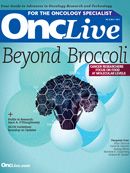Right Public Health Message Serves Up Facts Without Panic
Despite misgivings among physicians, the Internet is growing as a source of health information for patients.

Despite misgivings among physicians, the Internet is growing as a source of health information for patients. The FDA’s recent handling of a potential link between breast implants and a rare form of cancer serves as a textbook example of how to communicate an important public health message without promoting hysteria.
The role of the Internet as a source of health information is well established—and growing. While the data are perhaps not representative of the entire population in this country, a survey in Consumer Reports in March revealed that 61% of the magazine’s subscribers search the Internet for information regarding their own medical condition.
Yet while the public is clearly comfortable using the Internet for this purpose, the medical community has concerns regarding the overall quality and usefulness of health data available through this source. For example, in the same survey noted above, only 8% of physicians said the Internet was “very helpful” for their patient population.
However, no matter what objective data show or subjective feelings indicate about the current state of affairs associated with Internet-based health-related communication, there is little disagreement regarding the remarkable potential for this rapidly evolving strategy to serve a vitally relevant role in providing highly meaningful, valid, and easily understood information to individual patients and all of society.
Consider, for a moment, the ability of public health authorities to inform both the public in general, or a specifi c patient population in particular, about a complex matter that may require action, even though the message itself may result in understandable, but perhaps excessive, anxiety and concern that lead to more extreme actions than warranted based on existing evidence.
A specifi c and highly relevant recent example of the effective use of Internet-based communication by a public health agency in this setting is found in the FDA’s discussion of its preliminary assessment of the potential development in women with breast implants of a very rare cancer, anaplastic large cell lymphoma (ALCL).
In a January 26 press release, the FDA described the preliminary findings of a “possible association between saline and silicone gel-filled breast implants and anaplastic large cell lymphoma.” The agency accompanied the announcement with a “Consumer Update” brochure, available in PDF format for downloading, and relevant background links (Consumer Update).
The material was presented in a well-organized manner that a nonmedical and nonscientific audience should have easily understood. In addition, the authors took great care to explain both the clinical significance of the finding of this cancer, but also the rarity of the condition. They note, for example, that “about 60 cases of ALCL in women with breast implants worldwide” have been reported among “an estimated 5 million to 10 million women worldwide” who have breast implants. However, even though quite rare in women with breast implants, the FDA document noted that “ALCL located in breast tissue is found in only about 3 out of every 100 million women nationwide without breast implants.”
Finally, and perhaps most importantly, very specific recommendations and action items are presented to the public and women with breast implants. The news release states: “There is no need for women with breast implants to change their routine medical care and follow-up. ALCL is very rare; it has occurred in only a very small number of the millions of women who have breast implants.”
Additionally, the FDA uses this document and an online drug-monitoring strategy to encourage healthcare professionals “to report all confirmed cases of ALCL in women with breast implants to MedWatch, the FDA’s safety information and adverse-event reporting program.” Thus, at the same time the FDA is providing up-to-date objective data and appropriate reassurance to women with breast implants, it is continuing to encourage healthcare professionals, and patients themselves, to provide additional data upon which future health-related recommendations and communications can be based.
Public health agencies should be encouraged to expand substantially their efforts to communicate electronically with patients, the public, and healthcare professionals. The strategy that the FDA employed in this communication regarding ALCL in women with breast implants is an excellent example of how this can be accomplished effectively.
Maurie Markman, MD, editor-in-chief of OncLive, is vice president of Patient Oncology Services and national director for Medical Oncology at Cancer Treatment Centers of America, Eastern Regional Medical Center, Philadelphia, Pennsylvania.




